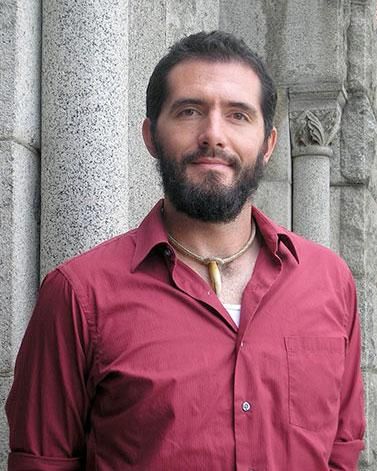About
Education:
- Ph.D. Johns Hopkins University: Baltimore, Maryland
- B.S. University of Alaska Fairbanks: Fairbanks, Alaska
- A.S. Flathead Valley Community College: Kalispell, Montana
Areas of Interest: Physical Chemistry, Photoelectrolysis, Electron Transfer, Renewable Energy
Courses Taught: Physical Chemistry, General Chemistry, Essentials of Chemistry, Integrated Lab
Dr. John Rowley, Ph.D., is the recipient of the Guido Bugni Professorship:
The financial support of the Guido Bugni Professorship makes it possible for me to provide research opportunities to our students, specifically working to invent new and creative mechanisms that convert solar energy into a chemical fuel. Undergraduate research is an open-ended, creative, and interdisciplinary process that illustrates to our students the value of the broad spectrum of academic disciplines to which they have been exposed to at Carroll College. My students are motivated to develop new forms of renewable energy because of their desire to use their knowledge of chemistry to serve the human family. Our students do not simply want knowledge to prepare them for a vocation; they want the knowledge and awareness that will allow them to choose a vocation that makes a difference in the world. Thank you to everyone who has helped support undergraduate research at Carroll College.
When students graduate from Carroll College, the problems they will encounter are multidiscipline, open-ended, and loosely defined. I believe that it is our job as educators to prepare our students for these real-world problems. Too often colleges only prepare students to answer well-worded problems taken from a textbook; applying course knowledge to real-world problems becomes “on the job training.” While at Carroll College I have been able to work with my colleagues to continue the tradition at Carroll of creating classes that prepare our students not for school, but for life. At Carroll I have helped create three new classes that are course-based undergraduate research experiences (CUREs) that give our students the opportunity to make meaningful contributions to open-ended research questions. These CUREs classes span the freshman to senior level and in them our students make progress on answering real-world problems and develop the skills necessary to contribute to the modern economy. The advantage for our students is that in a CURE they see first-hand the value of the content they have learned as they hone the skills of creative problem-solving, collaborating as a team, and communicating technical information.
In addition to course-based research experiences, I have also been able to support several summer research students through external research grants. My research interest is in the area of renewable energy, specifically solar fuels. The focus of my research has been on the mechanism of visible-light driven carbon-carbon bond formation. The near-term goals of my research are to answer basic scientific questions about carbon-carbon bond forming mechanisms; the long-range goals of my research are to assist in the development of new solar fuel technologies. I typically mentor 2-3 undergraduate student researchers during the summer months and mentor additional students throughout the semester in independent studies or research-based courses. Additionally, I actively collaborate with my department and cross-department colleagues to conduct research and provide research opportunities to our students.
I grew up in Montana and feel very fortunate to work, live, and play in the state that I am so fond of. I joined the Carroll College faculty in 2013 after attending graduate school at Johns Hopkins University and completing a postdoctoral researcher position at the University of Wyoming. When applying for a position in academia, I was interested in working at a primarily undergraduate institution because I wanted a position that valued quality teaching and offered an opportunity to continue my research interests while mentoring undergraduate students. I thoroughly enjoy my position at Carroll College. I have been able to mentor burgeoning scientists, work side-by-side with intelligent and invested colleagues, conduct independently-funded research, and create several new course-based research experiences.

